Rome had eight ports on the Tiber. Where were they?
Until the early decades of the twentieth century Rome could count on real ports, with port structures, barriers, walls and traffic that also made it possible to better regulate the regimes of flooding or not of the Biondo river. Where were these marinas, now left in old photos or ancient paintings?
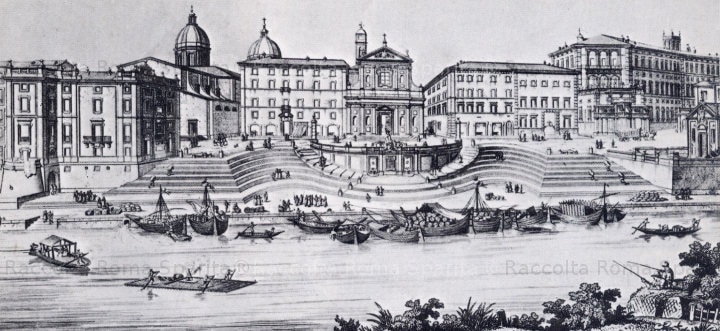
As reported in a nice article by Gian Carlo Pavia, there were eight Roman ports, plus three outside citizens. Let’s list them in order of size and historical-commercial importance: Ripa grande a Testaccio, di Ripetta, Tiberino, Fluviale (Emporium), Leonino, Arsenale Pontificio (Porta Portese), Moderno dell’Arsenale, Scalo De Pinedo.
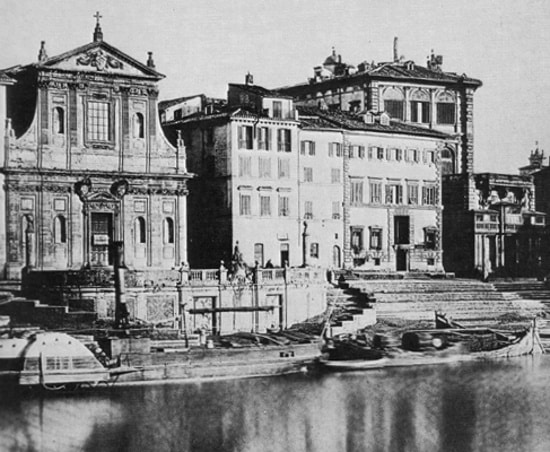
The main port of Rome: Ripa Grande in Testaccio
Starting from the 2nd century BC. the Testaccio area at the foot of the Aventine was chosen for the construction of a new river port on the Tiber.
The port of Ripa Grande was the river port of Rome where the goods that went up and were handled
descended the Tiber towards the Fiumicino landing. The construction of the walls canceled its existence and functions, keeping traces only in the toponymy.
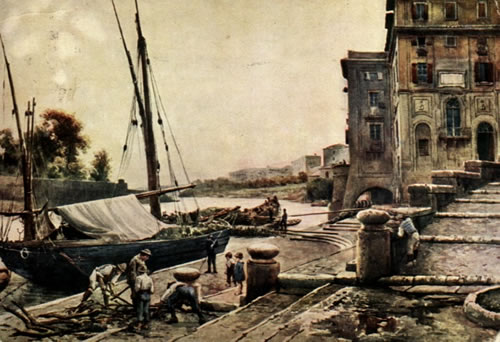
The port of Ripetta
The Clementine port, commonly known as Ripetta to distinguish it from the larger port of Ripa Grande, was arranged by Pope Clement XI, hence the name.
Originally it was a rudimentary illegal marina, roughly at the height of the church of San Rocco, for the unloading of wood, coal and wine. In 1704 Pope Albani, Clement XI, approved the proposal of his president of the roads for the creation of a system of quays, stairways and square. Much of the material comes from an arch of the Colosseum, which provided a valuable material such as travertine after an earthquake.
The Tiberinus port
The “portus Tiberinus”, the port of ancient Rome, appears to have existed in the area between the temples of the Forum Olitorio and the Temple of Portunus; in practice it was located, and occupied the area, where the Palazzo dell’Anagrafe stands today, in front of the southern tip of the Tiber Island. The construction of the port can be attributed to Servio Tullio, as evidenced by some excavations.
The River port, the Emporium
From the beginning of the 2nd century B.C. a new port was built, the Emporium. Here was the landing point of the goods and raw materials that arrived from the port of Ostia, and went up the Tiber on barges towed by buffaloes (haulage). Today some visible sections remain embedded in the wall of Lungotevere Testaccio.
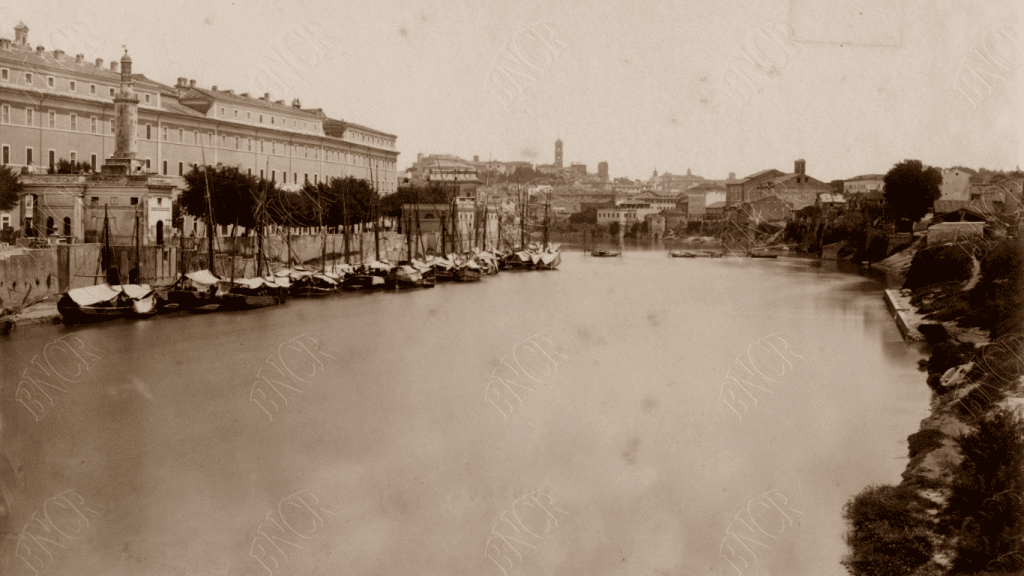
Leonine port
It stood next to the current Principe Amedeo di Savoia bridge, which leads to the Vatican. It took its name from Pope Leo XII who in 1827 had this small landing place built for the unloading of goods destined for the Vatican.
The port of the Arsenale (Pontifical)
Immediately outside Porta Portese, Pope Clement XI had the new papal arsenal built, intended for the maintenance of the river navigation, but also of the papal commercial shipping. The structure continued to function until the end of the 19th century when, with the construction of the walls on the Tiber, all activities related to the river were abandoned. Some traces remain of the port.
The modern port of the Arsenale
It stands on the bank opposite the old Gasometer.
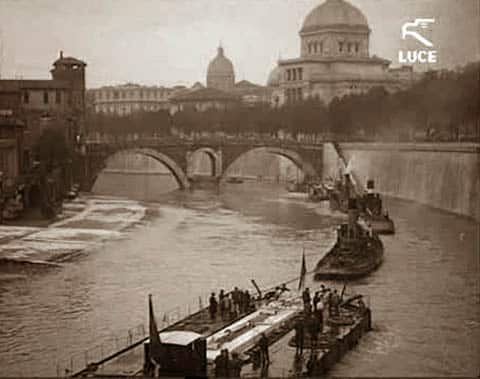
The port (Scalo) of Pinedo
The Scalo de Pinedo is located on the Lungotevere Arnaldo da Brescia, between the Pietro Nenni bridge and the Giacomo Matteotti bridge, which can be accessed via two ramps and a flight of steps. It was built at the end of the 19th century (to replace the port of Ripetta destroyed a few years earlier for the construction of the embankment walls of the Tiber) as a landing place for the existing craft establishments on the Via Flaminia (the tanneries located in Villa Poniatowski) and the industrial ones, like the gasometer. It is currently used for public and private events of various kinds.
